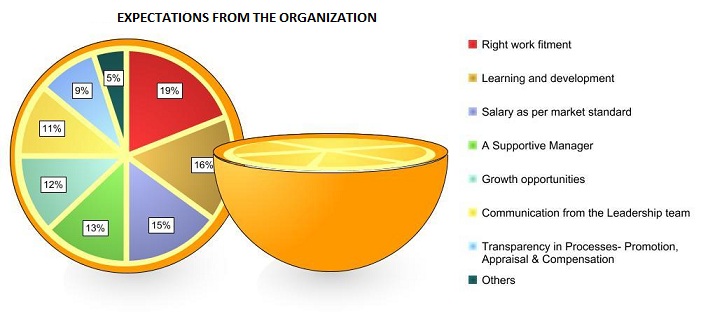Forced Ranking Model – An Overview
Several organizations are using the painful forced ranking based Bell Curve model for measuring their employee’s performance metrics. I said painful because every organization will have their own B-curve that suits their structure and needs. Managers are forced to come up with ranking of their team members and fit them into their organization-specific B-curve at the end of annual appraisal process. Forced ranking has its own challenges, esp. while dealing with Gen Y and Gen Z.
Forced ranking might have worked in the past and provided some transparency and mechanism for “pay for performance”; but, in current scenarios, it does not work. Fundamentally, forced ranking relies on comparisons. And, psychologically, we don’t like comparisons. We keep hearing that parents should not compare their kids between one another.
Role of Managers in Forced Bell Curve strategy
Managers are closely associated with their team members (atleast theoretically). They are the ones who can understand every team member’s strengths, skills, areas where improvements are needed, how to assist him/her, etc. The problem arises when they are forced to rank employees into an order – who scores better than other and then fit them into a bell curve. Top 20% goes into high performers, next 70% goes to average performers group and bottom 10% goes into low performers group. (% is dictated by HR).
In this kind of approach (forced ranking), there is no healthy competition between employees. Rather they get into racing to move to the top. There is always fear of falling out among employees and it does not bring in healthy collaborative atmosphere within the organization.
People who got higher ranking become happy and who did not get – they become unhappy. There would be disgruntlement among dis-satisfied employees. This in turn leads to loosing key employees (who deserve to be ranked well or higher) who are not ranked at top positions. Additionally, employees who make frequent discussion and conversation with the managers have greater chance of falling into “High Performers” bucket (get biased). Stress levels associated with appraisals are pretty high in this model for nobody’s benefit.
Forced Rating System to attain organization-specific B-Curve
1. Fixed/Forced Bell Curve Vs Employee Performance
Bell Curve is predominantly used by organizations to accommodate employees within their desired category. For instance, let us take the B-Curve structure to be 70% – Average Performers, 20% – High Performers & 10% – Low Performers. There could be more than 20% of the employees falling into High Performing bucket. But the organizations move the employees and make them fall into another category to properly position their typical B-Curve, because HR wants to do that way. Managers simply point the fingers to HR when employees question the decisions.
2. Bell Curve Vs Appraisal Process
Bell Curve plays a crucial role in all organizations at the time of appraisal towards “stress creation”. HR and Managers work and work on the B-Curve to attain their desired form and structure. This develops employee anxiety because no one is sure of falling into which bucket irrespective of how they perform. This approach has always had negative impact on organizations.
3. Bell Curve Vs Organization
The organizations to maintain their standards and measures actually tend to demotivate employees by comparing them against one another. It results in one, unhealthy competition, and two, they lose engagement. Both are equally ill and have the highest possibility to paralyze the organization.
Infosys & other companies bidding goodbye to forced ranking system
Organizations like Infosys, Accenture, Adobe, Microsoft, etc. have recently moved to incorporating a more holistic performance management, abolishing forced ranking system. Managers will have to analyze each performance of every employee. Also, managers are not forced to derive their organization-specific Bell Curve. If the bell curve results into skewed one, it does not matter. If a manager rates 50% of his/her team as high performers/super stars, it is perfectly alright.
Managers will have higher level of ownership and accountability on their rating. They don’t show HR as the reason anymore for rating some one as average performer…It is the Manager’s decision to put someone as average performer or low performer. And, they will have to clarify this positioning to their team member. Naturally, Managers will get into more frequent conversations with the team members. it will lead to effective, ongoing and constructive dialogs.
Therefore, employees will be rewarded for their performances and motivated towards work. They feel that the new performance management software will yield good results in terms of retaining key employees, considerable reduction in attrition, focusing on rewards for performance and improving employee performance. They also believe that employees will be highly engaged at work and better their performances.
What does it lead to?
Switching from forced ranking model to a more robust and agile approach will help in better employee-manager relationship, employee engagement, employee-work satisfaction and more importantly, employee retention. Thus, moving away from this approach will cost you evident growth, reduced attrition and positive work environment without affecting your underlying business objective and requirements.
Synergita does not support forced ranking concepts in our software. Our software brings in best performance management practices through continuous feedback, periodic reviews, etc. and puts the managers on the pilot seat.







